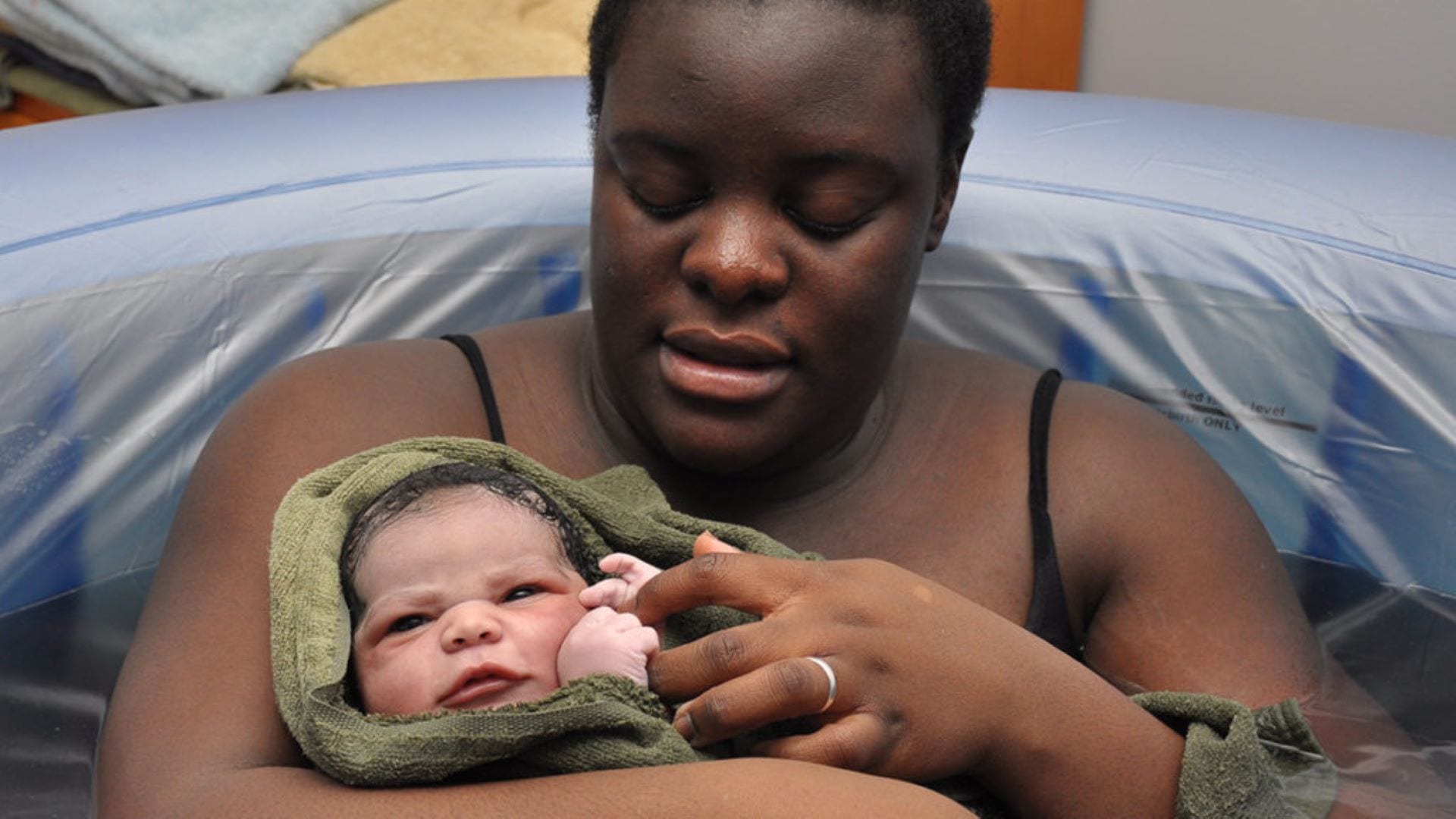When Caroline Malatesta went to Brookwood Medical Center in Alabama to give birth, nurses physically restrained her against her will and held her baby inside her for six minutes before a doctor arrived. The baby survived without injury, but Malatesta suffered permanent and debilitating nerve damage as a result. She sued after multiple attempts to get answers from the hospital went nowhere, and in 2016, she won $16 million.
I’ve written previously about violations of women’s rights in childbirth, and one of the most common responses I get to arguments like those I have made is that if women would just stop suing doctors, then doctors would treat them like human beings. Here’s why those arguments are wrong.
What malpractice claims really do: provide accountability
While tort law – the branch of legal practice that deals with civil (not criminal) harms or injuries that one person causes to another – has an unsavory reputation due to concerns about frivolous lawsuits, the history of tort law is actually the history of liberty. Lawsuits are the only weapons most ordinary people have to protect their rights against powerful institutions like the government or, in the case of childbirth, hospitals with phalanxes of lawyers.
OB/GYN liability in particular is much more complicated than the prevailing narrative would suggest. That narrative blames litigious women for defensive medicine, in which health care professionals recommend unnecessary tests and procedures and avoid risky ones to protect themselves from being sued. Most victims of medical malpractice never see a dime because the vast majority never sue.
Numerous studies on malpractice claims in general, including a major study in the New England Journal of Medicine, have found that medical errors are very common, while malpractice litigation is actually pretty rare. There are undoubtedly frustrating aspects of the malpractice system in the United States. The system is slow, costly, and uneven: the average claim in the NEJM study took five years to complete, and 54% of compensation went to administrative costs, including lawyers and expert witnesses.
Moreover, those cases that do make it to court are less likely to win financial settlements than those that are settled outside court, which some see as evidence of high rates of frivolous suits. But the clearest-cut cases are precisely those that will not go to trial; they will be settled instead. For the less clear-cut cases and for most patients, the process of filing a lawsuit is the only way they can get physicians and hospitals to turn over the information that would let them know if malpractice actually occurred.
What trials accomplish for patients
Trials are a discovery process for exactly this reason. Claims involving an injury but that don’t involve an error (for example, some stillbirths are simply unavoidable, no matter how competent the care provided) are more likely to reach trial because the trial itself uncovers facts about fault that no one can know before litigation begins. In essence, patients can’t know if their injury was the result of medical error until they go through the trial process. Precisely because someone can be injured without an error, and there can be a medical error without an injury, lawsuits may be the only way of sorting out what happened.
The fact that cases not involving malpractice reach trial is evidence that the system is working, not evidence that it’s failing. Furthermore, research repeatedly shows that most medical malpractice suits do involve serious injuries to patients. The question is not whether patients are experiencing harms, but whether such harms are the result of avoidable negligence on the part of medical providers. And most of the time, the only way to find that out is through a lawsuit. Hospitals are under no legal obligation to share that information or depose staff unless a lawsuit is filed.
What’s more, the tort system might be the only thing keeping malpractice levels down, since licensing boards and professional organizations have totally abdicated that responsibility. Licensing boards rarely take action against even clearly negligent physicians, and patients often don’t know even when adverse actions have been taken, which may be one reason why 1% of physicians rack up more than one-third of all malpractice suits.
It is unclear how limiting patients’ ability to sue would help this situation, when what is clearly needed is more accountability for state licensing boards (or a reform of the entire protectionist licensing system). And medical errors themselves are a serious problem in the US healthcare system, with a recent report estimating medical errors to be the third leading cause of death in the United States. What we need is more accountability from doctors and hospitals, not less. While the tort system appears to have a limited effect on the prevalence of medical errors, it’s the best system we have right now.
Risk and liability in obstetrics
But perhaps obstetrics is different from other medical specialties. It is true that obstetrics carries with it more innate risks than some other kinds of medical practices. Babies are born with cerebral palsy for reasons no one fully understands. Babies get stuck, are stillborn, or have lifelong complications from birth and there is very often nothing even the best doctor can do to prevent such an outcome. Moreover, because birth injuries to children are often catastrophic and may require lifelong care, many parents see no alternative other than to sue for whatever compensation they can get to support a disabled child over his or her lifetime. These are truly tragic cases.
Despite these innate risks, obstetrics still faces high levels of avoidable medical errors, like every other specialty, as a major report on maternity liability finds. It turns out that negligent injuries to mothers and infants are actually relatively common: they make up around 1% of births, affecting as many as 40,000 women every year in the United States. Yet only around 2% of the victims of negligent injuries sue, and only around 1% of those win a suit. Of those who do win a monetary award, around half of the money goes to court and legal costs.
Claims by obstetricians that liability costs threaten their livelihood as providers are unsupported by the evidence. Obstetricians now have the second highest salaries of any major specialty, and malpractice insurance as a share of overall practice costs has actually decreased over time, according to the maternity liability report. Nevertheless, liability concerns are a major cause of stress and dissatisfaction among obstetrics providers, even if the financial impact of such concerns is relatively low.
Why tort reform isn’t a solution
Tort reform itself is unlikely to alleviate practitioner stress over lawsuits and is also unlikely to improve the quality of care. When compared across states and across liability frameworks, interventions like cesarean sections seem largely independent of either the cost or availability of liability insurance. Similarly, tort reforms and administrative compensation programs have little effect on the rate of cesarean sections, often touted as a major defensive procedure used by obstetricians.
There are two possible explanations for this gap between physician self-reports and actual practice patterns. First, it could be that physicians are using liability as an excuse for surgery and other interventions that both lower liability and increase payments to themselves. Or they may believe the risks of being sued to be much higher than they in fact are. What does seem clear is that obstetricians underestimate the rates of medical errors and overestimate their risks of malpractice claims.
What is ironic, given the relatively high rates of negligent injuries in childbirth, is that only 11% of OB/GYNs responding to a survey on malpractice liability argued that a good way to limit malpractice liability is to reduce the number of medical errors, according to a 2015 Medscape survey of over 4000 OB/GYNs. The rest argued for some kind of tort reform. Is the answer to high rates of medically avoidable injuries even less accountability than we already have?
I don’t think so, because it creates precisely the wrong incentives.
What women and doctors really need
Providers can easily reduce their likelihood of being sued without tort reform. Perhaps obviously, improving the quality of care is one of the best ways to lower obstetrics malpractice claims. Also perhaps obviously, treating women like human beings helps lower liability risk, too. Doctors who take the time to establish a relationship with a patient and who communicate effectively with patients are much less likely to be sued than doctors who fail to treat patients as partners in their own care.
Who could have suspected that lowering the rate of medical errors while treating women like human beings would help lower the lawsuit rate? And yet in that same Medscape survey, only 6% of obstetricians who were sued indicated that if they could change their behavior to avoid a lawsuit, they would have spent more time with the patient or her family. Obstetricians may be in serious denial about where the real liability threat in their practice lies.
Just like with any complex legal issue, a few tweaks to the system may be necessary. Some of the highest-award lawsuits (but not the most common) in OB/GYN practice result from cerebral palsy, which in most cases is unlikely to be due to practitioner error. In those cases, birth injury funds or other ways of providing care for severely disabled infants whose injuries are not caused by malpractice might be a better way to go.
But overall, the vast majority of women who suffer preventable harm to themselves or their infants by doctors do not sue, and most cases that receive monetary awards involve a preventable medical injury. Given the crisis of medical errors in the United States, the tort system seems to be working okay.
The importance of obstetrics lawsuits
Malatesta’s case shows why the ability to sue is so important. Prior to filing a lawsuit, Malatesta spent months trying to communicate with hospital staff about why the birth plan she and her doctor created was completely voided, why her consent was repeatedly violated, and why she was physically assaulted during her birth, held down, and her baby smashed inside her while she struggled to resist. The hospital eventually cut off contact without providing explanations or answers.
Without tort, a lone individual could never have fought the administration of a major corporation. Without tort, the hospital would have continued to refuse to answer questions about her care. Without tort, the hospital would have continued advertising itself as “mother friendly.” Without tort, the hospital would have continued to violate women’s bodies without fear of repercussion.
Does Malatesta’s victory mean abuses like this will never happen again? Of course not. But it does mean one woman was able to prevent more women from experiencing the same abuse at Brookwood in the future, and she received some compensation for the permanent suffering their abuse caused. That’s something.
While it’s easy to get depressed about the state of maternity care in the United States, the good news is that the solutions to tackling both the OB/GYN liability “crisis” and the maternity care crisis in this country both point in the same direction: improve the quality of care for childbearing women and treat women like human beings with rights over their bodies. Novel thoughts, right?
Until those things happen, women should resist calls for tort reform and instead advocate for state licensing boards, obstetrics professional organizations, and hospital administrators (among others) — those who are supposed to be providing accountability for the widespread rates of violations of consent and medical errors — to actually start doing their jobs. Until then, tort law, as imperfect as it is, is still one of the best tools the vulnerable can use to defend their bodies and their liberty against coercion by those in power, whoever those in power happen to be.
To read more about healthcare, be sure to check out our cluster page by clicking on the link below.
This article was originally published on the Learn Liberty blog.
This piece solely expresses the opinion of the author and not necessarily the organization as a whole. Students For Liberty is committed to facilitating a broad dialogue for liberty, representing a variety of opinions.









